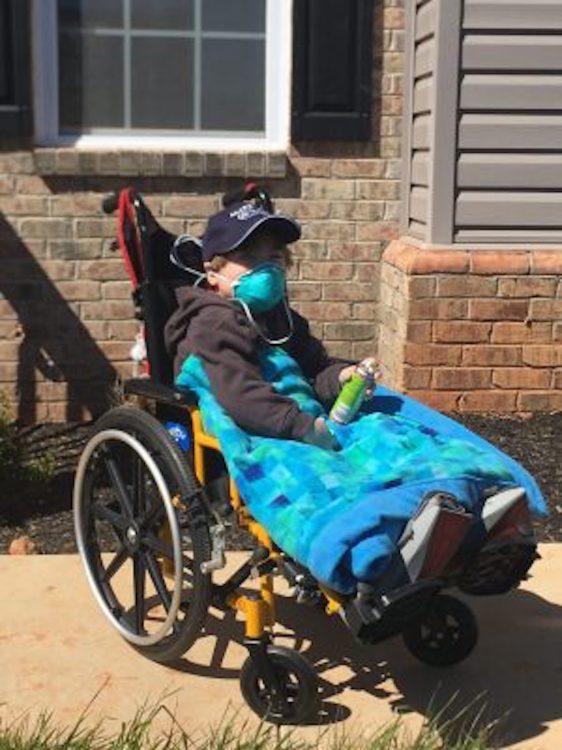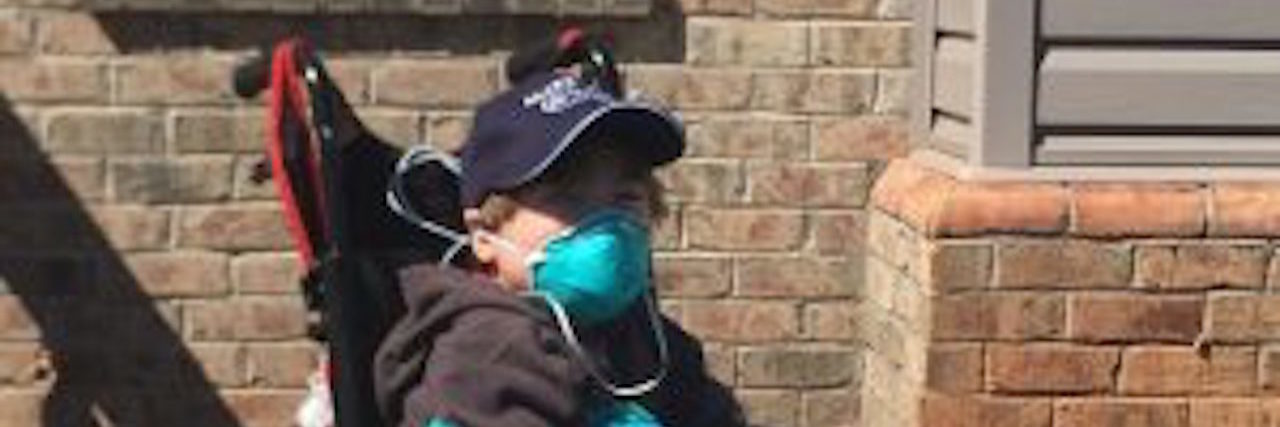We teach them not to stare. We teach them not to point. We tell them it’s rude to comment. I can remember these lessons well from my childhood, and I spent years training my older children in these methods.
But a recent trip to the zoo shook these teachings to the core. Have you ever found yourself in a situation where you were suddenly on the polar opposite side of where you were before?
We were like most families visiting the zoo that day – well, maybe not as much like most families as I would have liked to have believed. I pushed my 5-year-old little boy in his wheelchair as we scouted out our favorite animals. Frequent hospitalization and low blood counts made spending time in public unlikely events, which made me being oblivious to our appearance somewhat understandable. My little guy was dawning his protective green hospital-issued mask and equipment hanging from the back of his chair. However, it didn’t take long for my eyes to be opened to our situation.

We walked into the dark room, which housed the nocturnal animals, causing a bright light to filter in around us. A sweet looking little girl was gawking at bearcats behind glass when she caught a glimpse of my little boy. She couldn’t take her eyes off of him; it was apparent that my little boy had become as fascinating to her as the zoo animals which she had come to see. With a fixed gaze on us, she tugged on her mommy’s arm. I could see the questions in her eyes. As she began to raise her finger to point, that’s when her mom did it, the exact thing the majority of us have been trained to do. This sweet little one couldn’t even get her questions out before her mommy gently grabbed her little finger and said the phrase that has been repeated for generation after generation. With the best of intentions, she whispered in a soft voice,
“Honey, don’t point. It’s not polite to stare.”
I’ve done it. I’ve said it. Probably more times than I can count. My heart was always in the right place, just as this mother standing before me. The intention behind the statement is to not make the recipient of the point feel different.
But the truth is this, it’s not the pointing that makes feel people different; usually a person’s disability has already accomplished that task.
It’s what comes after the point that hurts the most. It’s in the whispering conversation that takes place as we scoop our children away. Unfortunately, the real lesson we are passing along to these young hearts is that we should remain silent. Don’t point. Don’t stare. Look away. Don’t ask.
The stares and the points don’t hurt nearly as bad as the isolation.
Instead of teaching them to not stare, tell them to smile. Don’t tell them to not point; teach them to shake hands. And most importantly, teach them that everyone has their own gifts and struggles.
There are times when it’s OK to ask questions. Questions bring awareness and break down walls of isolation. Those with different health conditions and disabilities know they have them, and their situation won’t become better because you averted your gaze.
It is often apparent when a person is approachable, and although there are always exceptions, most people would prefer to have questions over whispers.
Perhaps a parent could approach the person, and ask them if their child may ask a question about their circumstances.
If the person chooses to not share their story, then we have still taught our children a lesson in respect and compassion.
Start conversations with your children at home before going out. Help them understand that they will see people who may look different and have different ways of getting around. Letting them ask questions and sharing pictures of others can help them understand people and their differences prior to experiencing them in public.
These preliminary conversations will make them feel more comfortable with others and enable them to respond with compassion, instead of confusion or fear.
Share and play out scenarios where they may encounter someone with a disease and disability. These lessons will equip them with the tools they need to understand how to handle different types of situations. Building a foundation of understanding when in private will better prepare our children for unfamiliar encounters in public.
Help them understand that they do not need to be afraid of someone who has a disability or health condition. Help them find the beauty in each person, and allow them to see that we all have our differences, though some differences are a little more visible than others.
It’s time to speak and not whisper. Include, not isolate. Love, not fear.
No one wants to feel invisible. Sometimes disabilities can take so much away from a person — don’t let it take away their identity too.
It’s time to change the lesson. When we teach our little ones to see people as whole beings, and not just their health conditions or disabilities, they will grow into compassionate adults who are able to identify the true beauty in others.

